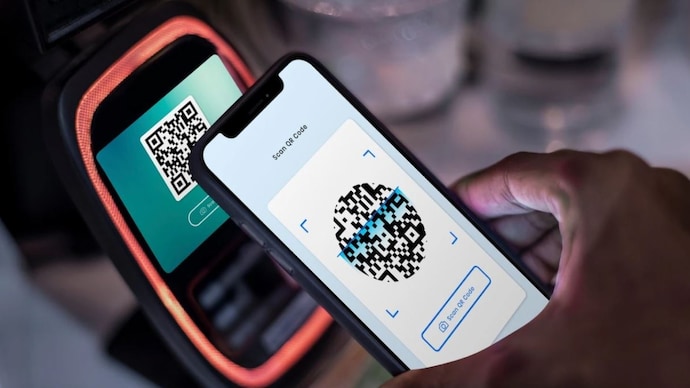In today’s fast-paced digital economy, India has embraced the convenience of tap-and-pay like never before. With UPI becoming a global case study and digital wallets replacing physical cash, everyday transactions have become smoother, quicker, and almost invisible. But within this convenience lies a hidden danger: micro-payments that slowly and steadily drain savings without most people even realizing it.

From Rs 10 subscription renewals to Rs 40 online game add-ons to Rs 99 delivery charges, micro-payments have become a quiet yet powerful force shaping personal finances. What seems like a harmless expense today becomes a serious leak by the end of the month. And for millions of Indians, this invisible spending pattern is creating financial stress, reduced savings, and a silent dependence on instant digital gratification.
rawcocks.com | drivenewjersey.com | Comfort-Lamarck.com
xoslotclubth.com | manga-jp.com
The Rise of Micro-Payments in India
Digital India has brought with it a massive shift in how people spend money. Gone are the days of calculating each expense, handing over physical cash, and feeling the weight of every transaction. Today, a Rs 20 payment feels almost meaningless when it takes just a tap on a screen.
Common micro-payments include:
-
Small UPI payments under Rs 100
-
App subscriptions (OTT, cloud storage, music apps)
-
Food delivery convenience fees
-
Online gaming recharges
-
Micro EMIs and buy-now-pay-later instalments
-
Auto-renewals for tools, apps, courses
-
Daily travel payments (autos, metro, cabs)
-
Instant grocery top-ups
-
Social media boosts or creator subscriptions
Each of these feels tiny. But combined, they create a massive outflow that the brain does not register clearly.
Why Micro-Payments Are So Dangerous
The psychological impact of frictionless digital payments is huge. When people spend cash, they feel the pinch. When they pay digitally, they don’t.
Several behavioral factors make micro-payments financially harmful:
1. They feel too small to matter
A Rs 50 payment seems insignificant. But 20 such transactions equal Rs 1,000.
2. They happen frequently
Micro-payments occur daily — metro rides, snacks, subscriptions, convenience fees.
3. Auto-renewals hide the financial impact
Apps quietly renew subscriptions every month. Many users forget what they even subscribed to.
4. The brain doesn’t register digital payments
Digital payments don’t activate the same psychological resistance as physical cash.
5. Marketing tactics encourage “small spends”
Apps use language like:
-
“Only Rs 20 extra”
-
“Add-on for Rs 15”
-
“Upgrade for just Rs 49”
This creates the illusion of low cost.
6. Rewards and gamification emotionally trap users
Cashback promises, progress bars, badges, and alerts push people to spend more without realizing it.
The Real Cost: How Much People Lose Monthly
Many Indians report losing anywhere between Rs 2,000 to Rs 8,000 a month to micro-payments.
Common monthly micro-expense breakdown:
-
OTT subscriptions: Rs 149 to Rs 699
-
Delivery charges + platform fees: Rs 300 to Rs 1,800
-
Online gaming add-ons: Rs 200 to Rs 3,000
-
Micro-EMIs (BNPL apps): Rs 200 to Rs 1,000
-
Cloud storage: Rs 75 to Rs 150
-
Payments for small purchases: Rs 1,000 to Rs 5,000
By the end of the month, people wonder:
“Where did my salary go?”
The answer lies in dozens of Rs 10, Rs 50, and Rs 100 invisible leaks.
Why India Is More Vulnerable to Micro-Payment Leakage
Several cultural and economic reasons make micro-payments especially impactful in the Indian context:
1. Young population with digital-first habits
Most digital spenders are between 18–35, an age group that:
-
values convenience
-
purchases impulsively
-
spends emotionally
-
avoids budgeting
2. Digital wallets dominate
Apps like PhonePe, Paytm, and Google Pay are used for everything from paan to petrol.
3. Rising lifestyle expenses
Food delivery, streaming, online gaming, and transportation apps contribute heavily.
4. Lack of financial literacy
Most people don’t track spending or maintain budgets.
5. Emotional spending triggered by stress
Working professionals, students, and gig workers often spend small amounts for quick gratification.
The Silent Savings Crisis
Micro-payments directly impact savings goals.
Savings shrink without awareness
People planning to save Rs 5,000 a month end up saving only Rs 1,500 because of untracked micro-expenses.
You cannot cut one big expense
These leaks don’t come from one place — they come from 30 different spots.
Financial anxiety increases
When money disappears without clear memory of spending, it creates stress and confusion.
How to Control Micro-Payment Leakage
The good news: micro-payments can be managed if you build awareness and discipline.
1. Identify your micro-payments
List:
-
subscriptions
-
app services
-
food delivery frequency
-
gaming purchases
-
transport spends
You will be shocked.
2. Turn off auto-renewals
Apps survive on forgotten renewals. Turn them off.
3. Track every digital payment
Use:
-
bank statement
-
UPI history
-
expense tracker apps
4. Set a monthly micro-expense budget
Example:
Only Rs 1,000 per month for small spends.
5. Shift small purchases to cash
This instantly reduces impulse spending.
6. Delete apps that trigger micro-spending
Food delivery, gaming, shopping apps are major culprits.
7. Use “24-hour rule”
Wait 24 hours before making any optional purchase.
Micro-Payments Are the New Cigarette Packs
Just like people once underestimated the cost of smoking until they calculated yearly spend, micro-payments today are becoming the new lifestyle drain.
A Rs 50 daily expense = Rs 18,250 a year
A Rs 150 daily expense = Rs 54,750 a year
A Rs 300 daily expense = Rs 1,09,500 a year
These numbers are shocking, and most people never calculate them.
Final Thoughts: Small Spends Create Big Financial Damage
Micro-payments are the invisible thieves of the digital era. They don’t announce themselves, they don’t feel heavy, and they don’t hurt immediately. But over time, they quietly chip away at your savings, dreams, and financial stability.
The danger is not the Rs 20 spend — it’s the frequency, ease, and psychological invisibility of micro-payments.
If Indians want true financial freedom, the first step isn’t investing — it is plugging the leaks.
